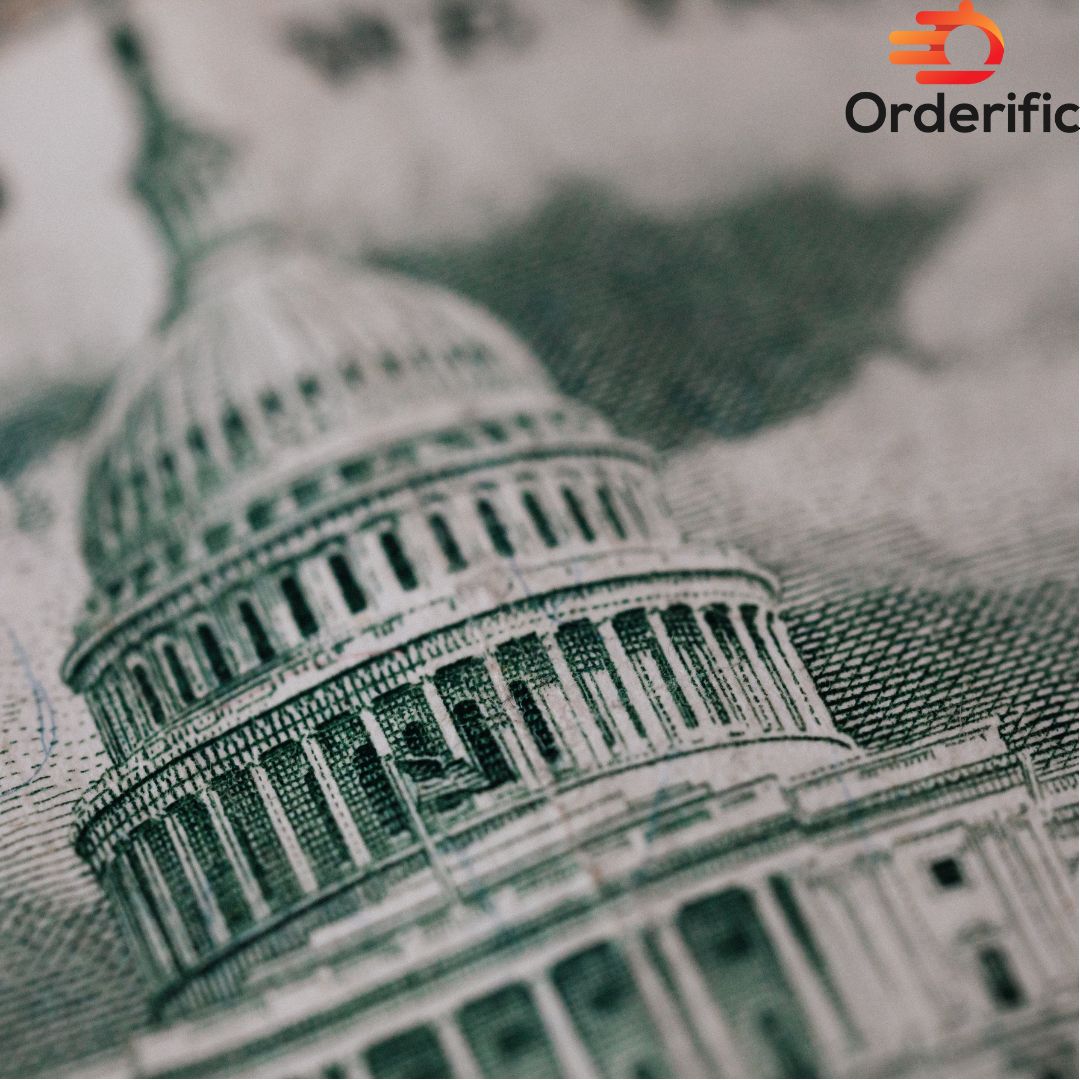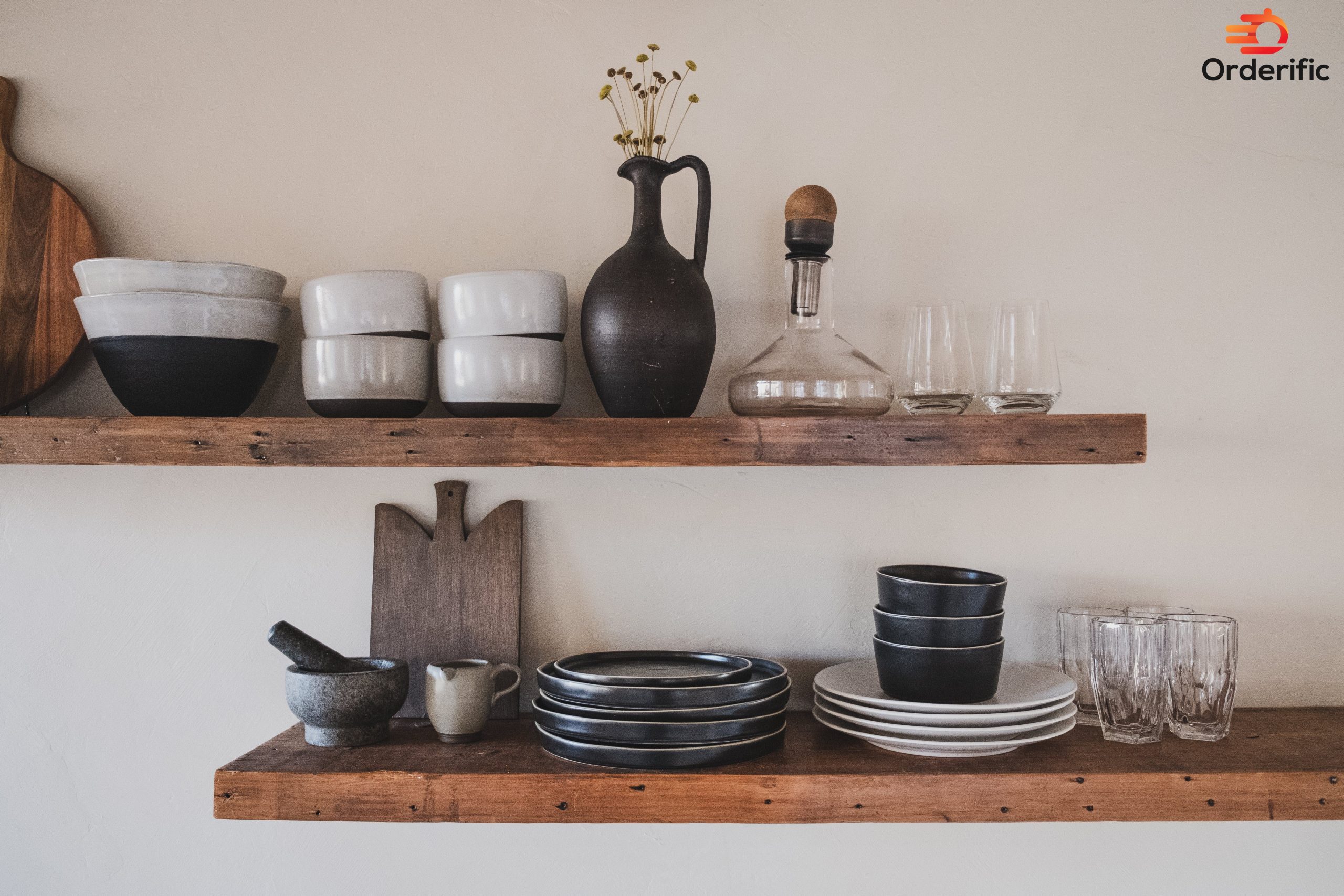Navigating the realm of financial estimations can be a formidable task, yet it’s a challenge many of us confront regularly. Determining the expenses tied to endeavors such as home renovations, car purchases, or international travel can prove to be intricate. The encouraging news is that we’re here to shed light on these fiscal uncertainties you might be grappling with right now.
Within this blog, we will delve into a comprehensive exploration of the genuine expenses associated with life’s most significant outlays. Whether you’re seeking frugality tips or intrigued by average expenditure across diverse sectors, continue perusing as this post dissects all the pertinent information you need to know!
Home Renovations
Undertaking a home renovation might appear as a formidable endeavor, yet it also presents an invigorating prospect to revitalize your living environment. Whether your aspirations involve modernizing the kitchen, expanding your living space, or simply revitalizing the interior design, home renovations offer boundless prospects. The allure lies not only in enhancing the visual allure of your home but also in augmenting its overall value.
Nonetheless, a measured approach encompassing a well-structured budget, pragmatic anticipations, and the engagement of a dependable contractor is imperative. Armed with the appropriate tools and perspective, a triumphant home renovation stands to yield a more contented, functionally enriched, and aesthetically pleasing abode for you and your dear ones. Let’s explore the potential cost factors associated with these undertakings:
Kitchen Remodeling
The expenses associated with kitchen remodeling can greatly fluctuate based on multiple factors such as kitchen size, the extent of renovations, chosen materials, and geographical location. Here’s a general cost breakdown to provide you with an idea:
- Minor Revamp: A minor kitchen remodeling project typically involves surface-level changes like repainting, cabinet refacing, appliance upgrades, and new countertops. The budget for this can range from $5,000 to $20,000.
- Moderate Transformation: If you’re considering more comprehensive changes including new cabinets, upgraded countertops, flooring, and potentially reworking the layout, you might be looking at a cost of roughly $20,000 to $50,000.
- Significant Renovation: For a substantial overhaul involving custom cabinetry, high-quality appliances, premium materials, and adjustments to the kitchen layout, the cost could fall within the range of $50,000 to $100,000 or more.
- Luxurious Upgrade: Opting for a high-end kitchen with top-tier appliances, luxury cabinetry, premium countertops, and intricate design elements could push the cost beyond $100,000.
It’s essential to note that these figures are rough estimates, and the actual expenses can vary significantly. Labor charges, much like bathroom renovations, are a key factor. Labor costs account for around 20% to 50% of the total project expenses, depending on the complexity of the work and local labor rates. Moreover, unexpected challenges or personalized design preferences can also impact the final price. To avoid unforeseen costs, obtaining multiple quotes from contractors and meticulously planning the project is recommended.
Bathroom Renovations
Estimating the expenses for bathroom renovations in the US is subject to various variables, including bathroom size, the extent of renovations, chosen materials, and regional location. Here’s a comprehensive cost breakdown:
- Foundational Upgrades: A fundamental bathroom overhaul encompassing minor modifications like fresh paint, updated fixtures, and hardware replacements might come to around $3,000 to $7,000.
- Moderate Refurbishment: If you opt for more significant changes, such as fixture replacements, a new vanity installation, toilet upgrades, and tile enhancements, the expenses could be in the range of $8,000 to $20,000.
- Premium Transformation: Pursuing a lavish renovation involving upscale materials, custom fixtures, heated floors, and intricate tile designs could translate to costs spanning from $20,000 to $50,000 or even higher.
Bear in mind that these figures are rough estimates, and the actual costs can diverge. Moreover, the labor component can notably impact the overall outlay. Labor charges constitute between 20% to 50% of the total project expenditure, contingent on the project’s complexity and prevailing labor rates in your locality.
Basement Finishing
The expense of completing a basement in the United States can exhibit significant fluctuations, contingent upon variables such as basement size, project extent, material preferences, local labor expenses, and desired level of personalization. Below is a general breakdown of potential cost ranges:
- Foundational Finish: A fundamental basement finishing endeavor might encompass insulation, drywall installation, basic lighting provision, and flooring. This could entail an expenditure of approximately $20 to $30 per square foot. To illustrate, for a basement averaging 800 to 1,000 square feet, the total outlay might span from $16,000 to $30,000.
- Intermediate Finish: A mid-range basement completion featuring upgraded flooring selections (such as carpeting or engineered wood), enhanced lighting solutions, an additional bathroom addition, and potentially a rudimentary recreational space could encompass costs in the range of $30 to $50 per square foot. For the same 800 to 1,000-square-foot basement, this projection might equate to an expense ranging from $24,000 to $50,000.
- Upscale Finish: A high-end basement completion venture might entail premium materials like hardwood flooring, bespoke cabinetry, a comprehensive wet bar setup, sophisticated lighting and audio systems, and possibly amenities like a home theater or fitness area. This tier of finish might involve expenses of $50 to $100 or more per square foot. Consequently, for an 800 to 1,000-square-foot basement, the investment could surge from $40,000 to over $100,000.
It’s important to note that these estimations are approximate figures and do not incorporate supplementary costs such as permits, design consultancy fees, or potential unforeseen expenditures. Moreover, labor costs fluctuate considerably based on geographical location and project intricacies. To ensure adherence to your budget, it is advisable to gather quotes from contractors, thoroughly discuss your specific requisites, and meticulously strategize your basement finishing initiative.
Travel Expenses
Airfare
Airfare expenses within the United States exhibit a broad spectrum of variability due to a multitude of contributing factors. These factors encompass the timing of booking, the travel season, airline preference, chosen route, and the class of travel. Below is a comprehensive outline detailing potential cost ranges for domestic flights:
- Economy Class: Economy class tickets for domestic flights span a price range starting as low as $100 and extending to $500 or even higher for one-way travel. The cost differential hinges on variables such as travel distance, route popularity, and booking lead time. Flights covering shorter distances between proximate cities tend to occupy the lower end of this bracket. Conversely, longer journeys across the country or flights scheduled during peak travel periods tend to command prices at the upper end.
- Premium Economy: Airlines provide a premium economy class that surpasses the standard economy in terms of comfort and amenities. Pricing for premium economy options fluctuates between $200 and $800 or potentially more for one-way travel, influenced by the specific route and airline in question.
- Business Class: Distinguished by elevated services and heightened comfort, business class tickets significantly surpass the cost of economy options. Travelers considering business class can anticipate prices ranging from $500 to over $1,500 for one-way domestic travel.
- First Class: The pinnacle of opulence and service is embodied by the first-class experience. Prices for first-class domestic travel within the US showcase a substantial range, typically spanning from $800 to upwards of $2,500 for one-way journeys.
Accommodation
Lodging expenses across the United States display significant diversity, influenced by a multitude of factors, including geographical location, accommodation type, service quality, and seasonal variations. Presented below is a comprehensive outline of potential cost brackets for various accommodation categories:
- Economical Lodging: Catering to budget-conscious travelers, establishments such as motels, hostels, and no-frills hotels provide cost-effective options. Rates typically span approximately $40 to $100 per night. These choices often prove more economical when sought in less touristy locales or during periods of lower demand.
- Comfortable Mid-Range Stay: Positioned between budget and luxury, mid-range hotels and inns offer enhanced amenities and services. Prices generally range from $100 to $250 per night. The exact cost spectrum hinges on factors like the destination’s popularity, site proximity, and available conveniences.
- Exquisite Luxury Accommodation: Exemplifying opulence, upscale hotels boast premium amenities, prime settings, and exceptional service. Costs can vary between $250 to $600 or even higher per night. Distinguished or renowned hotels situated in major urban hubs might command elevated price points.
Transportation
Transportation expenses across the United States exhibit considerable diversity due to transportation mode, distance, geographical location, and individual preferences. Here is a comprehensive overview of potential cost ranges associated with various transportation alternatives:
- Public Transit: Public transportation systems encompassing buses, subways, and trams often represent a cost-effective choice. Fares vary from city to city, with typical single-ride prices falling within the $2 to $3 range. Many urban centers also offer weekly or monthly passes, affording unlimited rides at approximately $25 to $100, contingent on the locale.
- Ridesharing Services: Services like Uber and Lyft extend convenient door-to-door commuting. Costs fluctuate according to distance and demand dynamics. Short-distance rides might commence around $5 to $10, while longer journeys span between $20 to $50 or beyond.
- Taxis: Traditional taxi services are accessible in most metropolitan areas. Initial charges range from $2.50 to $5, accompanied by supplementary fees per mile or minute. For a moderate intra-city taxi ride, the expense typically ranges from $20 to $40.
- Rental Cars: Renting a vehicle entails expenses influenced by factors such as vehicle type, rental duration, and geographical location. Basic economy car rentals usually start at approximately $30 to $50 per day. Conversely, larger or luxury vehicles may surpass $100 per day.
- Train Travel: Amtrak and regional train networks provide services in specific regions. Prices differ based on travel distance and class of accommodation. Brief jaunts may cost between $20 and $50, while extended voyages encompass a broader spectrum ranging from $100 to $300 or more.
Education
College Tuition
The cost of attending colleges and universities in the United States exhibits considerable diversity, influenced by several key factors, including the institution’s nature, public or private status, residency classification, and chosen field of study. Below is an overview of the general tuition ranges within these categories:
- Public Community Colleges: These two-year educational establishments offer associate degrees and specialized vocational programs. Typically, tuition is more budget-friendly, especially for residents of the state in which the institution is located. On average, in-state students pay roughly between $3,000 and $5,000 annually for tuition and associated fees. Out-of-state students, however, generally face higher costs ranging from $8,000 to $10,000.
- Private Colleges and Universities: Private institutions tend to carry higher tuition expenses. Private colleges’ average tuition and fees span approximately $20,000 to $40,000 per year. For particularly prestigious or renowned private universities, these costs can elevate further, sometimes exceeding a range of $50,000 to $60,000 annually.
- Specialized Programs and Professional Schools: Tuition for specialized programs, such as medical school, law school, or business school, demonstrates significant variability. Notably, the costs associated with medical and law schools, for instance, encompass an annual spectrum of approximately $30,000 to $60,000 or potentially higher.
Trade School Programs
Vocational and technical career paths in the United States are catered to by trade school programs offering specialized training. These programs deliver a more targeted and hands-on education compared to traditional universities. The expense of trade school programs fluctuates based on factors such as the program type, location, duration, and the specific vocation being pursued.
The tuition fees for trade school programs can exhibit a wide range depending on how long the program lasts and its complexity. On average, the cost of trade school programs can span from a few thousand dollars to approximately $20,000 or even higher. Programs with shorter durations or those concentrating on specific skills generally have more affordable tuition, while more extensive and comprehensive programs may entail higher expenses.
Online Course Costs
- Massive Open Online Courses (MOOCs): MOOCs, available through platforms like Coursera, edX, and Udemy, exhibit a wide cost spectrum. While some are entirely free, others charge around $100 per course. Many MOOCs offer the choice of a paid certificate track, which generally falls within the range of $30 to $100 or even higher
- Community Colleges and State Universities: Online courses from community colleges and state universities are structured with consideration for residency status. In-state students can anticipate fees between approximately $100 and $400 per credit hour. On the other hand, out-of-state students might face significantly higher costs.
- Private Online Universities and Colleges: Institutions primarily dedicated to online education, often private, come with diverse tuition structures. While prices differ widely, a typical range could be $300 to $700 per credit hour.
- Bootcamps and Intensive Courses: Geared towards specialized skills, particularly in tech domains, online bootcamps and intensive courses are typically more condensed. These programs, costing anywhere from $5,000 to over $20,000, focus on rapidly imparting specific skill sets.
Healthcare
Medical Procedures
Medical procedure expenses in the United States exhibit a wide spectrum due to several factors, including the procedure type, facility location, physician’s expertise, insurance coverage, etc. Here’s a general breakdown of how these costs can be categorized:
- Routine Checkups and Office Visits: Basic appointments with primary care physicians or specialists span approximately $100 to $300 or potentially higher. The cost hinges on factors like the nature of the visit’s complexity and the geographical area.
- Diagnostic Tests: Expenses for diagnostic tests like X-rays, blood tests, and MRIs demonstrate variability. Blood tests range from $20 to a few hundred dollars, whereas more advanced imaging, such as MRIs, could amount to around $1,000 or even more.
- Prescription Medications: The expense tied to prescription drugs showcases substantial diversity, contingent on factors like the medication type and insurance coverage. Common medications translate to $10 to $50 per prescription, while specialized or brand-name drugs can command significantly higher prices.
- Emergency Room Visits: Emergency room visits carry notable costs due to the urgent and often intricate nature of care provided. Initial costs initiate at roughly $500 and can rise considerably based on the gravity of the situation and the extent of services administered.
Health Insurance
- Monthly Premiums: These are your regular payments to uphold your health insurance coverage. The amount varies based on factors like plan type, provider, coverage level, age, location, and family members. These premiums span roughly $200 to $600 or even higher for an individual. Family plans covering multiple individuals range from $500 to $1500 or more.
- Deductibles: A deductible denotes the sum you’re required to pay before your insurance starts covering expenses personally. Plans with lower monthly premiums usually come with higher deductibles, and the reverse applies. Deductibles can differ, ranging from a few hundred to several thousand dollars. On average, individual deductibles hover between $1,000 to $4,000, while family deductibles are around $2,000 to $8,000.
Prescription Medications
Navigating the landscape of prescription medication costs in the United States can be intricate due to a multitude of factors. These factors encompass the nature of the medication, the extent of insurance coverage, the chosen pharmacy, and the decision between generic and brand-name options. However, a general overview can be provided:
- Generic Medications: This category commonly offers the most economical choice. On an average scale, the cost of generic prescription drugs spans from $5 to $30 per prescription.
- Brand-Name Medications: Contrasting with generics, these medications can be pricier. The cost variability is substantial, where certain brand-name drugs demand several hundred dollars for a single prescription. Notably, some brand-name medications possess more reasonably priced generic equivalents, making it advisable to deliberate on this aspect with your healthcare provider.
- Specialty Medications: Geared towards addressing intricate or infrequent conditions, specialty medications emerge as notably more expensive. The financial range here can be significant, at times extending from hundreds to thousands of dollars per month. Additionally, these medications might entail specific prerequisites for coverage, like prior authorization.
Personal Finances
Budgeting Tools
In the pursuit of maintaining sound personal finances, effective budgeting plays a pivotal role. Fortunately, a plethora of digital tools have emerged to simplify the process, empowering individuals to take charge of their financial well-being. These tools offer features that streamline expense tracking, savings goals, and financial insights. Here are five prominent budgeting tools that can help you stay on top of your financial game:
- Mint: A well-established tool, Mint consolidates your financial accounts, providing a comprehensive overview of your spending habits. It categorizes transactions, sets budgets, and alerts when bills are due.
- YNAB (You Need A Budget): YNAB employs a proactive budgeting approach, focusing on assigning every dollar a specific purpose. This tool emphasizes creating a plan for your money, helping you make informed spending decisions.
- Personal Capital: More than just a budgeting tool, Personal Capital offers investment tracking and retirement planning alongside expense monitoring. It’s a robust option for individuals looking to manage both day-to-day finances and long-term goals.
- EveryDollar: Built on the zero-based budgeting principle, EveryDollar ensures that your income minus expenses equals zero. This encourages you to allocate every dollar intentionally, leaving no room for overspending.
Credit Card Fees
While credit cards offer unmatched convenience in payment methods, the adage “nothing comes for free” rings true. In the United States, credit card fees stand as an unavoidable reality that confronts numerous consumers. These fees manifest in diverse ways, encompassing annual, balance transfer, late payment, and foreign transaction fees. While some fees can be sidestepped by selecting the appropriate card, others are an inherent part of the transaction process. Scrutinizing the fine print and comprehending the fee structure linked to any prospective credit card is vital. This empowers you to craft an astute decision that aligns with your financial plan and spending inclinations.
Investment Fees in the US
Deliberating on where to invest your hard-earned finances is a pivotal choice that warrants thoughtful consideration. An integral facet of this decision-making process involves comprehending the associated fees. This fundamental element should be considered.
Within the United States, the landscape of investment fees follows a diversified pattern, where distinct investment vehicles encompass varying costs. Whether opting for mutual funds or delving into exchange-traded funds (ETFs), each avenue presents its own merits and demerits, intricately interwoven with fees that can accumulate gradually. While these charges might appear inconspicuous initially, their gradual impact can erode your returns over time.
For individuals venturing into the realm of investing, achieving a comprehensive grasp of the complete fee spectrum is indispensable. From advisory fees guiding your investment journey to the expense ratios shaping your investment vehicle, this comprehension is a safeguard, ensuring astute and well-informed choices concerning your financial ventures.
Conclusion
In conclusion, the cost dynamics across diverse sectors, such as education, healthcare, and personal finances in the United States, are multifaceted. The landscape of tuition fees, medical procedures and health insurance costs, prescription medication expenses, and financial tools and fees presents a wide spectrum, influenced by numerous factors. It’s crucial to navigate these complexities with a comprehensive understanding to make informed decisions. For more thought-provoking and informative content, we invite you to explore more blogs on Orderific. Our goal is to provide clarity, enabling you to navigate your financial journey confidently and quickly.
FAQs
Q. How much does it cost to renovate a kitchen?
Ans. Kitchen renovation costs can vary widely but typically run between $12,000 to $35,000 depending on the size and quality of materials.
Q. What is the average cost of a bathroom renovation?
Ans. The average bathroom renovation cost in the United States ranges from $6,000 to $15,000, again depending on the size and quality of materials.
Q. How much does it cost to finish a basement?
Ans. Finishing a basement may cost between $10,000 and $30,000, with the price varying based on the size and extent of the renovations.
Q. What is the typical cost of airfare for domestic travel?
Ans. Domestic airfare prices fluctuate based on factors such as time of booking and route, but a safe average estimate is around $250 to $500 for a round trip.
Q. How much should I budget for accommodations on a trip?
Ans. Accommodation costs depend on location and type of lodging, but a reasonable daily budget could range from $50 for budget accommodations to $200 or more for higher-end hotels.
Q. What is the average cost of college tuition?
Ans. On average, public colleges cost around $10,000 per year for in-state students and $26,000 for out-of-state, while private colleges average around $35,000 per year.













